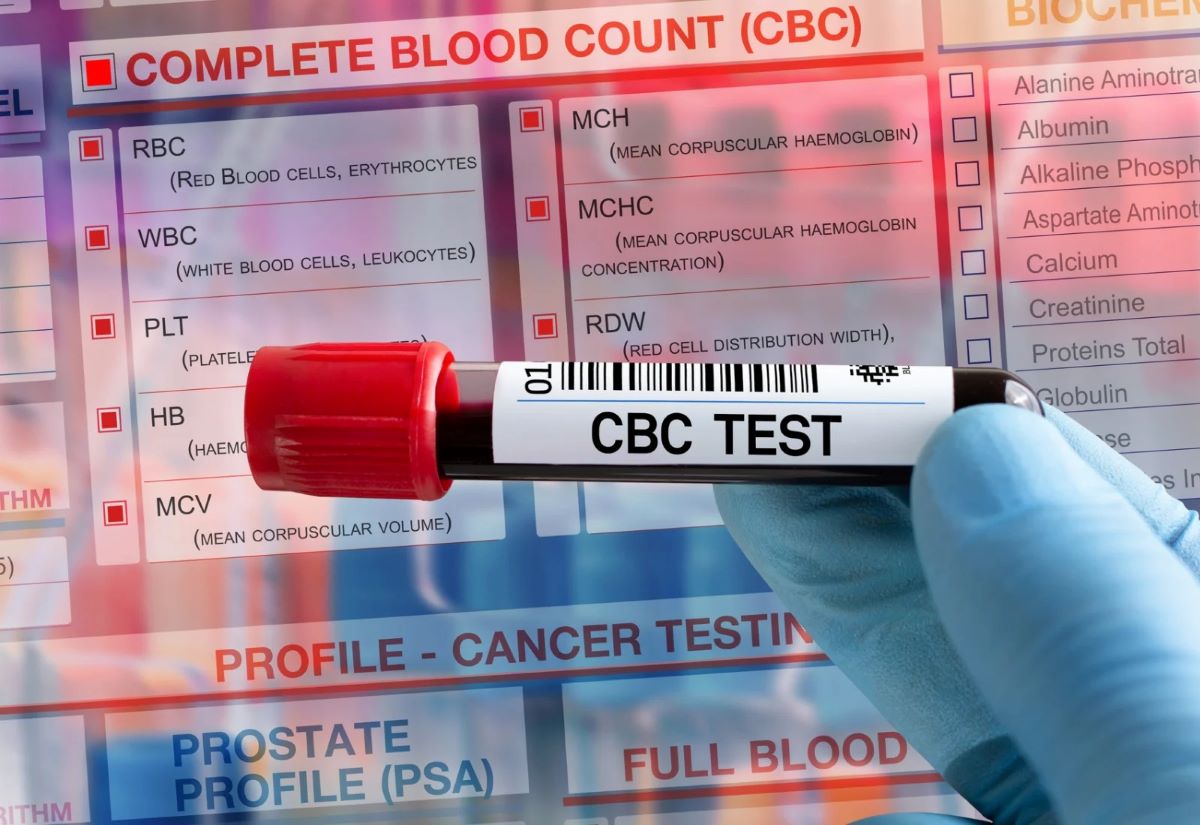Home>Finance>How Much Does A Doppler Ultrasound Cost Without Insurance?


Finance
How Much Does A Doppler Ultrasound Cost Without Insurance?
Published: November 15, 2023
Find out the cost of a Doppler ultrasound without insurance and explore your options for financing this medical procedure.
(Many of the links in this article redirect to a specific reviewed product. Your purchase of these products through affiliate links helps to generate commission for LiveWell, at no extra cost. Learn more)
Table of Contents
Introduction
When it comes to medical imaging, Doppler ultrasound is a commonly used diagnostic tool. It is a non-invasive procedure that uses sound waves to produce real-time images of blood flow in the body. This enables healthcare professionals to assess the health of blood vessels and tissues, as well as detect any abnormalities or blockages.
The Doppler ultrasound technology measures the speed and direction of blood flow by analyzing the Doppler shift of the sound waves reflected off the moving blood cells. This information is then converted into visual representations, such as colored images or waveforms, that can be interpreted by medical professionals.
Due to its versatility and safety, Doppler ultrasound is widely used in various medical fields, including cardiology, obstetrics, and vascular surgery. It can help diagnose conditions such as deep vein thrombosis, peripheral artery disease, and abnormalities in fetal blood flow. Doppler ultrasound is also used to monitor the effectiveness of treatments and to guide certain procedures.
However, one of the concerns that many people have when considering a Doppler ultrasound is the cost, especially for those who do not have health insurance coverage. Medical procedures can be expensive, and without insurance, the financial burden can be even greater.
In this article, we will explore how much a Doppler ultrasound can cost without insurance. We will also look into the factors that can affect the cost and provide some tips on how to save money on this procedure.
What is a Doppler Ultrasound?
A Doppler ultrasound is a type of medical imaging technique that uses sound waves to create images of blood flow in the body. It is named after the Austrian physicist Christian Doppler, who first described the phenomenon of the Doppler effect, which is the change in frequency of a wave as it reflects off a moving object.
Unlike traditional ultrasound, which focuses on capturing static images of organs and tissues, Doppler ultrasound adds an additional layer of information by measuring the speed and direction of blood flow. This is particularly useful in evaluating the health of blood vessels and diagnosing conditions that affect blood circulation.
Doppler ultrasound works by emitting high-frequency sound waves into the body using a handheld device called a transducer. These sound waves bounce back when they encounter moving blood cells, which creates a change in frequency (Doppler shift) that is detected by the transducer. The ultrasound machine then processes this information and generates real-time images that depict blood flow patterns and velocity.
The images produced by a Doppler ultrasound can be displayed in different ways, depending on the specific application. In some cases, colors are used to represent the direction and speed of blood flow, with red indicating blood moving towards the transducer and blue indicating blood moving away. This color-coded map, known as color Doppler, provides a visual representation of blood flow patterns.
In addition to color Doppler, another common display mode in Doppler ultrasound is spectral Doppler. It shows blood flow waveforms, providing information about the speed and characteristics of blood flow. These waveforms are essential for evaluating the function of the heart and blood vessels.
Overall, Doppler ultrasound is a valuable diagnostic tool that allows healthcare professionals to assess the health of blood vessels and detect any abnormalities or blockages. It is commonly used in a variety of medical specialties, including cardiology, obstetrics, and vascular surgery, to aid in the diagnosis and monitoring of various conditions.
The Importance of Doppler Ultrasounds
Doppler ultrasounds play a crucial role in modern healthcare by providing valuable information about blood flow and circulation. Here are some key reasons why Doppler ultrasounds are important in medical practice:
- Diagnosis of Vascular Conditions: Doppler ultrasounds are highly effective in diagnosing vascular conditions, such as deep vein thrombosis (DVT) and peripheral artery disease (PAD). By assessing the blood flow in the veins and arteries, healthcare professionals can identify blockages, narrowing, or abnormalities that can impede circulation and potentially lead to serious health complications.
- Assessment of Fetal Well-being: In obstetrics, Doppler ultrasounds are extensively used to assess the well-being of the developing fetus. By monitoring blood flow in the umbilical cord and fetal blood vessels, healthcare providers can detect any abnormalities, such as restricted blood supply or placental insufficiency. This helps in identifying potential risks to the baby’s health and allows for timely intervention.
- Evaluation of Cardiac Function: Doppler ultrasounds are essential for evaluating cardiac function and detecting any abnormalities in blood flow within the heart. By analyzing the flow of blood through the heart chambers and major blood vessels, healthcare professionals can assess the efficiency of the heart’s pumping action and identify conditions such as valvular heart disease or congenital heart defects.
- Monitoring of Treatment Progress: Doppler ultrasounds are often used to monitor the effectiveness of treatments, such as surgeries or medications, for vascular conditions. By tracking changes in blood flow patterns before and after treatment, healthcare providers can assess the success of the intervention and make informed decisions regarding further management.
- Guidance for Interventional Procedures: Doppler ultrasound is widely employed in guiding various minimally invasive procedures, such as vascular stenting or catheter-based interventions. It allows healthcare providers to visualize the blood vessels in real-time, aiding in accurate placement of devices and monitoring of the procedure to ensure optimal outcomes.
Overall, Doppler ultrasounds provide vital information that helps healthcare professionals make accurate diagnoses, assess the severity of conditions, and determine the most appropriate course of treatment. This non-invasive imaging technique has revolutionized the field of medical diagnostics and has become an indispensable tool in various medical specialties.
Factors Affecting the Cost of Doppler Ultrasound without Insurance
Several factors can influence the cost of a Doppler ultrasound when you don’t have insurance coverage. Understanding these factors can help you anticipate the potential expenses associated with the procedure:
- Location: The geographical location can significantly impact the cost of healthcare services, including Doppler ultrasounds. Prices tend to vary from one region to another, as well as between urban and rural areas. Generally, healthcare facilities in more expensive areas may charge higher fees for the procedure.
- Healthcare Provider: The choice of healthcare provider can also affect the cost. Different hospitals, clinics, and imaging centers may have varying fee structures based on their overhead expenses, reputation, and expertise. It’s always a good idea to compare prices and consider multiple options to find the best balance between quality and affordability.
- Type of Facility: The type of facility where the Doppler ultrasound is performed can influence the cost. For example, a hospital-based imaging center may have higher fees compared to an independent radiology clinic. This is due to the additional facilities and services available at hospitals, such as round-the-clock staff and specialized equipment.
- Additional Services: Depending on your specific condition or healthcare provider’s recommendation, additional services or tests may be required alongside the Doppler ultrasound. These can include consultation fees, blood tests, or follow-up appointments. It’s important to consider these potential additional costs when estimating the overall expense.
- Complexity of the Procedure: The complexity of the Doppler ultrasound procedure can impact the cost. More detailed and comprehensive exams may involve longer scan times, multiple views, and interpretation by specialized radiologists. These factors can contribute to higher fees compared to simpler Doppler ultrasound examinations.
- Financial Assistance Programs: It’s worth exploring financial assistance programs offered by healthcare facilities or government agencies. Some facilities provide discounts, payment plans, or charity care for individuals who are uninsured or facing financial hardships. These programs can help reduce the financial burden of the Doppler ultrasound.
Keep in mind that the cost of Doppler ultrasound without insurance can vary greatly depending on these factors. It is crucial to inquire about the specific costs upfront and discuss any available options for reducing the financial impact.
Average Cost of Doppler Ultrasound without Insurance
The cost of a Doppler ultrasound without insurance can vary depending on several factors, as mentioned earlier. On average, the cost of a Doppler ultrasound can range from $200 to $1,000 or more. However, it’s important to note that these figures are estimates and can differ significantly based on your location, healthcare provider, and specific circumstances.
In some cases, the cost of a Doppler ultrasound may also depend on the specific body part or area being examined. For example, a Doppler ultrasound of the legs to evaluate peripheral artery disease (PAD) may have a different cost compared to a Doppler ultrasound of the heart to assess cardiac function.
It’s important to keep in mind that the cost of the Doppler ultrasound itself may not cover any additional fees or expenses, such as the interpretation of the results by a radiologist or any follow-up consultations. These factors can add to the overall cost of the procedure.
While these figures can give you an idea of the average cost, it’s crucial to reach out to healthcare providers in your area to get accurate pricing information. They can provide you with a detailed breakdown of the cost, including any potential discounts or financing options that may be available.
If cost is a concern, it’s worth exploring options such as community health clinics, which may offer lower-cost or sliding-scale payment options based on your income. Additionally, some imaging centers or hospitals have financial assistance programs in place to help individuals who are uninsured or facing financial difficulties. It’s essential to inquire about these programs and discuss your specific situation with the healthcare provider.
Remember, it’s important to prioritize your health and seek the necessary medical care, even if you don’t have insurance coverage. Open communication with healthcare providers about your financial situation can help you find a solution that allows you to receive the Doppler ultrasound evaluation you need.
Additional Fees and Expenses
In addition to the cost of the Doppler ultrasound procedure itself, there are several potential additional fees and expenses that you should be aware of when considering a Doppler ultrasound without insurance. These can vary depending on the specific healthcare facility or provider:
- Radiologist Interpretation: The images and results obtained from the Doppler ultrasound may need to be interpreted by a radiologist, who will provide a detailed report to your healthcare provider. This interpretation fee is separate from the cost of the ultrasound and can range from $50 to $200 or more.
- Consultation Fees: Depending on the healthcare provider’s recommendation, you may need to schedule a consultation to discuss the results and any necessary follow-up. Consultation fees can vary depending on the provider and typically range from $50 to $200.
- Preparation and Special Instructions: Some Doppler ultrasounds may require specific preparation, such as fasting or specific dietary restrictions. Your healthcare provider will provide you with detailed instructions, and any required supplies or medications may incur additional costs.
- Follow-Up Testing or Imaging: Depending on the findings of the Doppler ultrasound, your healthcare provider may recommend additional testing or imaging to further evaluate or monitor your condition. This can include additional ultrasounds, CT scans, or lab tests, which will have their own associated costs.
- Travel and Parking: If the Doppler ultrasound is conducted at a facility that is not easily accessible, you may need to account for travel costs, such as gas or public transportation fares. Additionally, parking fees, especially in urban areas, can add to the overall expense.
It’s important to inquire about these potential additional fees and expenses when scheduling your Doppler ultrasound. By understanding all the associated costs, you can better prepare financially and make informed decisions about your healthcare.
Additionally, it’s worth exploring any available financial assistance programs or payment plans offered by healthcare facilities. Many facilities are willing to work with patients who are uninsured or facing financial hardships to help make healthcare services more affordable.
Remember to communicate openly with your healthcare provider about your financial situation. They may be able to provide guidance or alternative options that can help minimize the financial burden while ensuring you receive the necessary care.
Ways to Save Money on Doppler Ultrasound without Insurance
While the cost of a Doppler ultrasound without insurance can be a concern, there are several strategies you can employ to help save money on the procedure. Consider the following tips:
- Shop Around: Prices for medical procedures can vary significantly between healthcare providers. Take the time to research and compare prices from different clinics, hospitals, and imaging centers. Look for facilities that offer competitive pricing or discounts for self-pay patients.
- Ask for Self-Pay Discounts: Some healthcare facilities offer discounts for patients without insurance coverage who are paying out-of-pocket. Don’t hesitate to ask about any available self-pay discounts and negotiate to get the best price.
- Explore Community Health Centers: Community health centers often provide more affordable healthcare options for individuals without insurance. They may offer Doppler ultrasounds at reduced costs or on a sliding scale based on your income. Research if there are any community health centers in your area that provide the services you need.
- Consider Medical Tourism: In some cases, traveling to another country for medical procedures can be significantly cheaper, even after factoring in travel expenses. Research reputable healthcare facilities abroad that offer Doppler ultrasounds at a fraction of the cost in your home country.
- Explore Financial Assistance Programs: Many healthcare facilities have financial assistance programs or charity care options for individuals who are uninsured or facing financial hardships. Inquire about these programs and check if you qualify for any reduced-cost or free services.
- Research Free or Low-Cost Clinics: Free or low-cost clinics in your area may offer basic medical services, including diagnostic imaging. These clinics are often run by non-profit organizations or government agencies and can provide affordable options for individuals without insurance.
- Consider Payment Plans: If paying for the Doppler ultrasound upfront is challenging, speak with the healthcare provider to see if they offer payment plans. This allows you to divide the cost into manageable installments over a specified period.
It’s important to mention that while saving money is crucial, it’s equally important to prioritize your health. Ensure that the healthcare provider or facility you choose maintains the necessary standards of quality and safety. Remember to communicate openly about your financial situation so that they can work with you to find a solution that balances affordability and effective medical care.
By exploring these money-saving options and being proactive in your search for affordable healthcare, you can reduce the financial burden associated with a Doppler ultrasound without insurance.
Conclusion
While the cost of a Doppler ultrasound without insurance can be a concern, it should not be a barrier to receiving essential medical care. Doppler ultrasounds play a crucial role in diagnosing and monitoring various conditions related to blood flow and circulation, making them an important tool in modern healthcare.
When considering a Doppler ultrasound without insurance, it’s important to research and compare prices from different healthcare providers, explore options such as community health centers or free clinics, and inquire about available financial assistance programs or payment plans. By being proactive and informed, you can find ways to make this diagnostic procedure more affordable.
Remember to communicate openly and honestly with your healthcare provider about your financial circumstances. They may be able to offer guidance, suggest alternatives, or provide access to additional resources that can help reduce the financial burden.
It’s also important to prioritize your health and well-being. While the cost may be a consideration, remember that the information obtained from a Doppler ultrasound can be crucial in diagnosing and monitoring various conditions. Early detection and treatment can often lead to better outcomes and improved quality of life.
If you are concerned about the cost of a Doppler ultrasound without insurance, take the time to explore your options, discuss your concerns with healthcare providers, and be proactive in finding ways to make the procedure more affordable. Your health should always be a top priority, and there are resources and solutions available to help ensure that you receive the necessary care.














